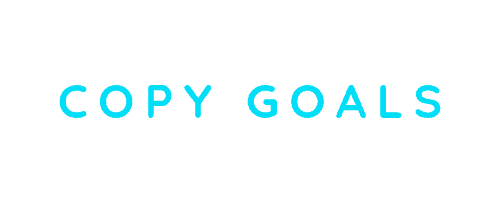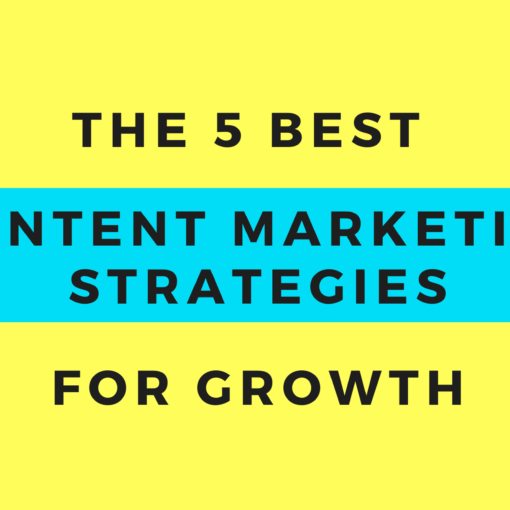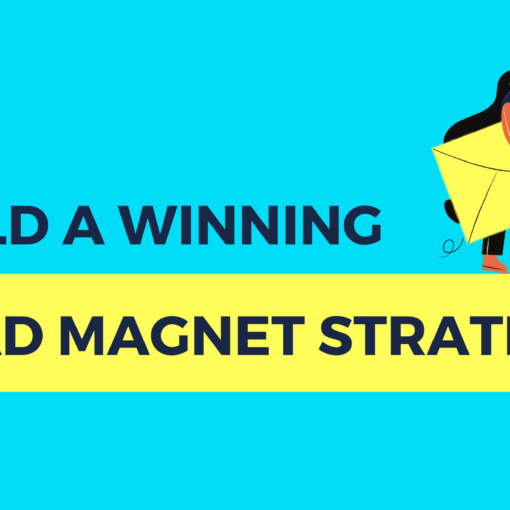Content marketing got you feeling like this?
I don’t blame you. If you care about the quality and efficacy of your content, there’s a lot to consider.
But a content plan will simplify the process. It’ll help you figure out the who, what, when, where, why and how before you dive in (and help you stay in charge of it all when you do).
Here’s everything you need to know about content planning so that you can create quality content at scale and with ease:
CONTENTS
- What Is a Content Plan?
- Why You Need a Content Plan
- How to Create a Content Plan
- Content Plan Examples and Templates
- Top Tips for Creating a Content Plan
What Is a Content Plan?
A content plan is where you map out and organize all of the tasks related to content creation and promotion. It should include content assets and/or campaigns along with deadlines or key dates.
If you’re in charge of a team, you’ll assign ownership of tasks or entire projects. You may also allocate resources and budget in your content plan.
The best content plans contain defined processes and workflows for content creation/promotion. For example, you might outline the finer details of each activity and include templates or briefs.
You may be wondering about the difference between a content plan and a content strategy. Well, your content strategy is a bit like your content marketing manual and your content plan comprises a significant chapter of that manual.
A documented content strategy contains your goals, research and analysis, the overarching methods you’ll use to achieve your goals, as well as your content plan. You’ll need to refer to the other elements, i.e. the research and so on, to put together your content plan.
Why You Need a Content Plan
Some don’t bother with a content plan because it seems like a lot of unnecessary, hard work. Others are like hummingbirds, flitting around, eager to just get started on content creation.
But, trust me, having a content plan will pay off. Here’s why:
1. Scale and Speed
You might feel like you’d need a time-freezing device to be able to scale content production. There’s a demand for quality content (and rightly so). Thus, it takes a long time to create a good infographic, email newsletter, blog post etc.
For instance, we now spend 63% more time creating a blog post than six years ago.
Yet, the defined, repeatable processes within your content plan mean you can create more content within a given time period. And the automation features of many content planning tools save even more time.
2. Manage Content Easily
Create a lot of content? Manage a content team or group of freelancers? A content plan will help you allocate your time accordingly and/or delegate tasks to others easily, all while staying on top of everything.
Four out of five of the most successful content marketers use an editorial calendar. So, there’s a lot to be said about being super organized in your approach.
3. Create Better Content
54% of marketers think their organization’s level of content marketing success is mediocre.
We need to do better.
A content plan forces you to think carefully about each content asset or content marketing activity – how it’ll help your audience, how it fits in with your wider goals, how you can get the most from it and so on. This makes it almost impossible not to create better content.
Speedier production, easier management and better quality content – aren’t these three things what all content creators and marketers want at the end of the day?
How to Create a Content Plan
Here’s how to put your content plan together:
1. Choose Your Weapon
The very first step is figuring out the best way to document your content plan. Here are the main options:
- Regular Documents
You might want to put all or some elements of your content plan, e.g. templates, in regular doc format. However, this is not the clearest nor most collaborative route.
- Spreadsheets
Spreadsheets work well for content management. You can keep all of the information you and/or your colleagues need well-organized.
- A Project Management Tool
Project management tools, such as Trello or Asana make collaboration and content management super easy.
- A Content Management Tool
There are some fantastic tools geared specifically towards content management and organization, such as CoSchedule and Contently.
2. Weigh Your Content Strategies
What are your most important goals?
You’ll create content assets or use content marketing tactics that’ll help you achieve every one of your goals, but you must give more weight to what’s most important.
If it’s not immediately clear, you might want to use a scoring system e.g. rate how well an asset aligns with your goals or what kind of ROI it will produce.
To complicate things, *sigh*, you also have to keep best practices in mind. For example, you might only need to blog twice a month but tweet daily to get the kind of impact you hope to achieve.
3. Include the 5 Ws and 1H
Now we’re getting onto the good stuff… The actual contents of your content strategy. However you choose to document your plan, here’s what it should include:
- Who?
You’ll need to assign tasks and responsibilities to the right members of your team (unless you’re a superstar that’s doing it all yourself). Make sure each person knows every step of content creation or promotion that they’re in charge of.
- What?
Add your content assets, campaigns and/or projects to your content plan. Include the types of content you’ll create e.g. infographic, blog post, video etc, as well as the topic, headline and any other information you think is relevant, such as calls to action.
- When?
Set realistic and achievable deadlines for your content projects. You may also wish to set deadlines for individual tasks, i.e. each step of creation and promotion.
- Where?
Add the channels you’ll use to publish and promote content. Also, note when and where you’ll be able to repurpose content on other channels.
- Why?
Outline the purpose of each content asset. Who are you targeting and why? What action would you like them to take?
- How?
It’s a good idea to include content templates, style guides and/or briefs to guide content creation. You may also wish to create workflows or checklists for content creation and promotion. These are examples of the kind of repeatable processes that’ll help you speed up your content marketing efforts.
Now you know what a content plan should include. But, what will it look like?
Content Plan Examples and Templates
Here are some fantastic examples and templates you can use to create your own content plan:
Content Planning Spreadsheet
This example from Smartsheet covers most of the bases:
As you can see the content is split into categories in the first column according to format. The next columns establish the topic, ownership, important dates, the status of the piece and more. As you move across, there are also columns with metrics for measuring content performance.
This would be a great general overview to share with your team. Use Smartsheet’s content planning template or create your own custom version on Excel or Google Sheets.
Content Plan for Social Media
If you create a lot of native social media content or social media content takes up the lion’s share of your strategy, you may want to create a content plan that’s purely for social media.
Here’s an example from Content Marketing Institute:
For each social media channel, it covers goals, topics, a posting schedule, ownership, a mini style guide, calls to action and more. In other words, it covers the 5Ws and 1H pretty darn well.
You can use CMI’s social media plan template or create something similar for you and your team.
Editorial Calendar Examples
1. Trello
Some of my clients like to use Trello to manage content projects and it works really well in my experience. Here’s an example of a blog editorial calendar on Trello:
Each block contains a piece of content, which you can move through the various stages of completion from “Writing” to “Ready to Upload”. This is a simple way to organize content and monitor progress.
Within each block, you can label the type of content, set a deadline, add custom fields e.g. the focus keyword and add a description. In the description field, you might want to outline the goals of the piece, the target audience etc.
You can also add any attachments that the content creator might need, e.g. templates, outlines, guides, or resources.
And finally, you can place a checklist that acts as a workflow for content creation.
If you decide to use Trello to plan content, you could create more boards for the other types of content you create, e.g. video, podcasts etc.
2. Asana
I, personally, like to use Asana to manage my blog and other content projects. If you want to get started quickly, the tool has ready-made content and editorial calendar templates.
The big selling-point of Asana for me is the different view formats. You can use a calendar format for an overview of all your projects:
You can move each individual piece of content through a kanban board as you’re working on it:
And there are more views you can use such as a simple list format or timeline for project milestones.
Similar to Trello, there’s lots you can do within each individual task block. Assign a task, set a due date, add a description, create sub-tasks and so on:
As an added bonus, a little rainbow unicorn sometimes flashes across the screen when you complete a task. *eek*
In my humble opinion, tools like these make content planning much easier. You (and your team) have all of the information you need set out clearly in one place. Plus, you can easily tweak your content plan as you go along.
Top Tips for Creating a Content Plan
Now you should have a good grasp of the practical side of creating a content plan. Here’s some further advice that’ll help you create the most useful and effective content plan possible:
1. Make Good Use of Your Research
There are some steps that come before creating a content plan. As part of creating your content strategy, hopefully, you’ve already carried out a content audit, audience research, goal-setting and so on.
As mentioned above, you really need to refer to this research and analysis when creating your content plan. It’ll not only make content planning easier but also more effective.
MavSocial’s Kieran Driver told me:
“My number one tip for creating a content plan would be to understand who your audience is. The better picture you have of your audience, the more you will be able to plan, create, and publish content that they will be able to relate with and enjoy. Only then will you be able to effectively meet your audience’s expectations, have them come back for more and get them to remain engaged with your business.”
Kieran Driver, Digital Marketing Associate, MavSocial
2. Come up With Ideas for High-Performing Content
The ideation stage or the “what” is one of the most important and time-consuming aspects of creating a content plan. But, you can use your research and analysis to come up with the content ideas that are most likely to perform well.
CoSchedule’s Ben Sailer shared his formula for generating first-rate content ideas with me:
“Put your customer’s needs first. Prioritize content that fits at the intersection of 1) the primary functions of your product or service and 2) your customer’s most pressing pain points.
If you can align those topics with solid keyword research, then so much the better (common problems often have high search volume and high difficulty, but don’t let that scare you away — just focus on providing the best content you can that meets those needs).
Uncovering these topics may be more complex than it seems on the surface, and they may change over time as your product evolves or your target market changes, but this is where everything should start at the most basic level. Not exactly a groundbreaking tip, but it’s imperative to get good at the fundamentals so you can build your content strategy on a strong foundation.”
Ben Sailer, Inbound Marketing Director, CoSchedule
3. Make Sure Everybody Is on the Same Page
When you run a business or head up a content marketing department, you need to make sure your content plan is aligned with wider business goals and the activities of other departments. Not only that, it’s a good idea to make sure those departments or colleagues have a solid understanding of what you’re doing and why.
G2’s Lauren Pope explains:
“You must create content with intention. A lot of companies have a blog or they’ll do a periodic webinar, but they aren’t leveraging content marketing to the fullest extent. You need to know who your audience is and what action you’re trying to get them to take before the pen ever hits paper. This doesn’t mean you need to waste months crafting a meticulous content calendar. You just need a North Star for the goal of each piece before you begin.
All of the content I create needs to fit into one of these buckets:
– Content that drives traffic (80%) – This is your long-form SEO content designed to rank for organic search. This content is perfect for reaching people who have a problem your product fixes, they just might not know it yet.
– Content that drives opinions (10%) – These are your podcasts, career profiles, video series, and thought-leader hot takes designed to get people talking. This is the stuff that gets shared across social media.
– Content that drives leads (10%) – This is the stuff your sales team wants. Why such a small percent? These are comprehensive guides where quality beats quantity. You don’t need a ton of these resources to do it right.
If someone asks me to create something that falls outside these existing buckets, I can sit down with them and figure out why. A lot of times we have existing content types for other teams’ needs, they just don’t know it. Internal education about our content strategy is just as important as the content we create for our readers. Taking the time to ensure our sales team knows what is available to them, how we can partner with them, and most importantly how content marketing can aid in winning deals totally changes the game.”
Lauren Pope, Content Marketing Manager, G2
4. Be Flexible
Things happen that may mean you need to alter your content plan. To give you a totally random example off the top of my head, say a global pandemic occurred…
In all seriousness, there needs to be flexibility within your content plan for many reasons. Firstly, to account for trending topics. Also, you’ll need to measure content performance and tweak your content plan accordingly.
Jordan Teicher at Contently suggests organizing content around larger themes and leaving a decent amount of wiggle room for whatever comes up:
“My number one tip is to think in terms of content series and bigger projects. When you’re developing a new content plan, there’s a tendency to try to predict every single story you’re going to create over the next 12 months. That sounds good in theory, but it winds up boxing you in.
A better approach would be to map out some major themes and then schedule a series of e-books, webinars, and videos around them.
For example, when Contently’s marketing team met at the beginning of the year, we decided to organize our content based on our key industries. So in the first quarter, we’d focus on finance. In the second quarter, healthcare. Third quarter, B2B tech, and so on. For each quarter, I knew we’d need an industry report and an accompanying webinar. Those two big content series gave us major releases spread out during the year. They also gave us the freedom to explore relevant topics for one-off blog posts, videos, etc. that fit under those themes.
This approach gives you good structure but still provides enough flexibility for new ideas that are timely.”
Jordan Teicher, Director of Content, Contently
Final Word
It’s tempting to dive right in and just start creating content. But, if you’ve got higher goals for your content then you need to use your brain and have some form of plan in place.
Set your intentions like a yogi and start putting together your content plan.
Bonus Material: Content Marketing Strategy Checklist
From goal-setting to research to content planning, make sure you cover every step of creating your content marketing manual:




2 thoughts on “How to Create a Content Plan (Step-by-Step Guide + Examples)”
Thanks for the great tips! I love how simple you make it. It’s not rocket science, but it does require an investment of time and a lot of marketers are intimidated just because they don’t know where to start.
Very true! I hope marketers will be able to use this post to make a strong start. Thanks for your comment, Alison.